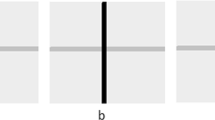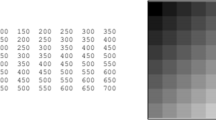Abstract
In recent trends, the image compression plays a pivotal part in conveying information throughout the world. It helps to reduce the redundant data of the image for the purpose of storing as well transmission in a cost effective manner. There are several conventional techniques that are used for image compression, but still it lacks in some issues such as increased error, inaccurate results, ineffective, etc. Thus, a novel hybrid image compression approach is proposed in this work for better image compression. Initially the input image is decomposed as structural and textural regions of the image. From the decomposed image, the process of feature extraction is carried out. Here the features from structural regions are extracted using Partial Differential Equation (PDE) based inpainting approach. The features from the textural features are extracted using the texture based algorithm. Among these extracted features, the redundant details are dropped to preserve the significant details. From this, the compressed image is obtained at the receiver side, the significant details from the compressed image performs region completion operation. Here the holes in structural regions are filled by PDE based interpolation technique and the textural regions are filled using texture algorithm, also the color information is synthesized along with this textural detail. Finally, the inpainting algorithm is used for correcting the discontinuities. The experimental results prove the superiority of this hybrid image compression.





Similar content being viewed by others
References
Vidhya, B., & Vidhyapriya, R. (2018). Image compression and reconstruction by examplar based inpainting using wavelet transform on textural regions. Cluster Computing, 22, 1–9.
Singh, M., Kumar, S., & Singh, S. (2016). Various image compression techniques: Lossy and lossless. Image, 142(6), 23–26.
Andris, S., et al., (2021) JPEG meets PDE-based Image Compression. arXiv preprint arXiv: 2102.01138.
Zdunek, R., & Sadowski, T. (2020). Image completion with hybrid interpolation in tensor representation. Applied Sciences, 10(3), 797.
Ding, D., Ram, S., & Rodriguez, J. J. (2018). Perceptually aware image inpainting. Pattern Recognition, 83, 174–184.
Ahmed, M. W., & Abdulla, A. A. (2020). Quality improvement for exemplar-based image inpainting using a modified searching mechanism. UHD Journal of Science and Technology, 4(1), 1–8.
Zhou, Q., et al. (2018). Efficient image compression based on side match vector quantization and digital inpainting. Journal of Real-Time Image Processing, 3, 1–12.
Qin, C., Chang, C.-C., & Chiu, Y.-P. (2014). A novel joint data-hiding and compression scheme based on SMVQ and image inpainting. IEEE transactions on image processing, 23(3), 969–978.
Peter, P., et al. From optimised inpainting with linear PDEs towards competitive image compression codecs. In: Pacific-Rim Symposium on Image and Video Technology. 2015. Springer.
Chen, Y., R. Ranftl, and T. Pock. (2014). A bi-level view of inpainting-based image compression. arXiv preprint arXiv: 1401.4112.
Peter, P., Schmaltz, C., Mach, N., Mainberger, M., & Weickert, J. (2015). Beyond pure quality: Progressive modes, region of interest coding, and real time video decoding for PDE-based image compression. Journal of Visual Communication and Image Representation, 31, 253–265.
Gao, Y., et al. (2016). Encoder-driven inpainting strategy in multiview video compression. IEEE Transactions on Image Processing, 25(1), 134–149.
Schneider, M., et al. (2016). Gradients versus Grey Values for Sparse Image Reconstruction and Inpainting-Based Compression. In J. Blanc-Talon (Ed.), International conference on advanced concepts for intelligent vision systems.Berlin: Springer.
Hoeltgen, L., et al., (2018). Theoretical Foundation of the Weighted Laplace Inpainting Problem. arXiv preprint arXiv: 1801.09068.
Hoffmann, S., Plonka, G., & Weickert, J. (2015). Discrete Green’s functions for harmonic and biharmonic inpainting with sparse atoms. In X. C. Tai (Ed.), International Workshop on Energy Minimization Methods in Computer Vision and Pattern Recognition.Springer.
Hanif, M., et al. (2018). Non-local sparse image inpainting for document bleed-through removal. Journal of Imaging, 4(5), 68.
Andris, S., Peter, P., & Weickert, J. (2016). A proof-of-concept framework for PDE-based video compression. In 2016 Picture Coding Symposium (PCS), (pp. 1-5). IEEE.
Hoeltgen, L., Peter, P., & Breuß, M. (2018). Clustering-based quantisation for PDE-based image compression. Signal, Image and Video Processing, 12(3), 411–419.
Wang, Z.-H., et al. (2015). Sharing a large secret image using meaningful shadows based on VQ and inpainting. KSII Transactions on Internet & Information Systems. https://doi.org/10.3837/tiis.2015.12.024
Hareesh, A. S., & Chandrasekaran, V. (2014). Exemplar-based color image inpainting: a fractional gradient function approach. Pattern Analysis and Applications, 17(2), 389–399.
Yatnalli, V., & Sudha, K. (2014). Image compression based on spatial redundancy removal and reconstruction using image inpainting. International Journal on Recent Trends in Engineering & Technology, 11(1), 623.
Pfurtscheller, G., et al., (2000) Current trends in Graz brain-computer interface (BCI) research. IEEE transactions on rehabilitation engineering. 8(2): p. 216–219. "http://www.imageprocessingplace.com/root_files_V3/image_databases.htm.
Trujillo, C.A., et al., (2019) Complex Oscillatory Waves Emerging from Cortical Organoids Model Early Human Brain Network Development. Cell stem cell. "http://homepages.inf.ed.ac.uk/rbf/CVonline/Imagedbase.htm."
Harris, F.J., (1978) On the use of windows for harmonic analysis with the discrete Fourier transform. Proceedings of the IEEE, 66(1): pp. 51–83. "http://www.robots.ox.ac.uk/~vgg/data/sculptures6k/."
Ponsam, J.G., & Srinivasan, R. (2014) A survey on MANET security challenges, attacks and its countermeasures. International Journal of Emerging Trends & Technology in Computer Science (IJETTCS), 3(1): pp. 274–279. "http://adrianbarburesearch.blogspot.com/p/renoir-dataset.html."
Funding
This research work was not funded by any organization/institute/agency.
Author information
Authors and Affiliations
Corresponding author
Ethics declarations
Conflict of interest
I confirm that this work is original and has not been published elsewhere, nor is it currently under consideration for publication elsewhere.
Competing Interests
None of the authors have any competing interests in the manuscript.
Ethical Approval
This article does not contain any studies with human participants or animals performed by any of the authors.
Additional information
Publisher's Note
Springer Nature remains neutral with regard to jurisdictional claims in published maps and institutional affiliations.
Rights and permissions
About this article
Cite this article
Vidhya, B., Vidhyapriya, R. Hybrid Structural and Textural Analysis for Efficient Image Compression. Wireless Pers Commun 120, 2831–2845 (2021). https://doi.org/10.1007/s11277-021-08587-w
Accepted:
Published:
Issue Date:
DOI: https://doi.org/10.1007/s11277-021-08587-w




